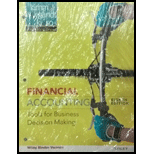
(a-1)
Liquidity ratios measure the short-term capacity of a company to pay its maturing obligations and to meet unanticipated requirements for cash. Liquidity ratios are
Solvency ratios
Solvency ratios measure the capacity of a company to sustain over a long period of time. Solvency ratios are debt to assets ratio, time interest earned ratio, debt to equity ratio, and more.
To Calculate: The Current ratio for the year 2017 and 2016 of Company SA.
(a-1)
Answer to Problem 10.6AP
Calculate current ratio for the year 2017 of Company SA as shown below:
Hence, the current ratio for the year 2017 is 1.03:1.
Calculate current ratio for the year 2016 of Company SA as shown below:
Hence, the current ratio for the year 2016 is 0.92:1.
Explanation of Solution
Current ratio is calculated by dividing current assets by current liabilities. Hence, the current ratio for the year 2017 is 1.03:1 and current ratio for the year 2016 is 0.92:1.
(a-2)
To Calculate: The
(a-2)
Answer to Problem 10.6AP
Calculate free
Hence, the free cash flow for the year 2017 is 2,457million.
Calculate free cash flow for the year 2016 of Company SA as shown below:
Hence, the free cash flow for the year 2016 is 1,500 million.
Explanation of Solution
Free cash flow is calculated by deducting cash dividends and capital expenditure from net cash flow from operating activities. Hence, the free cash flow for the year 2017 is 2,457million, and for the year 2016 is 1,500 million.
(a-3)
To Calculate: The debt to assets ratio for the year 2017 and 2016 of Company SA.
(a-3)
Answer to Problem 10.6AP
Calculate debt to assets ratio for the year 2017 of Company SA as shown below:
Hence, debt to assets ratio for the year 2017 is 65%.
Calculate debt to assets ratio for the year 2016 of Company SA as shown below:
Hence, debt to assets ratio for the year 2016 is 59%.
Explanation of Solution
Debt to assets ratio for the Company SA is calculated by dividing total liabilities with total assets and then multiplying with 100. Hence, debt to assets ratio for the year 2017 is 65%, and debt to assets ratio for the year 2016 is 59%.
(a-4)
To Calculate: The times interest earned ratio for the year 2017 and 2016 of Company SA.
(a-4)
Explanation of Solution
Calculate the times interest earned ratio for the year 2017 as shown below:
Hence, times interest earned ratio for the year 2017 is 3.14 times.
Calculate the times interest earned ratio for the year 2016 as shown below:
Hence, times interest earned ratio for the year 2017 is 9.89 times.
(b)
To Comment: trend in ratios of Company SA.
(b)
Explanation of Solution
- The company’s current ratio for 2017 is 1.03: 1which is higher than 2016 current ratio is 0.92: 1. It indicates that the company has high ability to pay its debts in 2017 as compare to 2016.
- The company’s free cash flow for 2017 is $(2,457) million which is greater than 2016 is $1,500 million. It shows that the company has sufficient cash in 2017 than in 2016.
- The company’s debt to assets ratio for 2017 is 65.38%, which is higher than debt to assets ratio of 58.26% of 2016. It shows that the company has less ability to meet its obligations in 2017 as compare to 2016.
- The company times interest earned ratios for 2017 is 3.14 times is lower than 2016 is 9.89 times. It shows that the company has less ability to meet its interest payments in 2017 as compare to 2016.
(c)
Calculate: The debt to assets ratio, after adjustment for Off-
(c)
Answer to Problem 10.6AP
Calculate deb debt to assets ratio, after adjustment for Off-balance sheet lease for the year 2017 of Company SA as shown below:
Hence, the value of debt to assets ratio, after adjustment for Off-balance sheet lease is 69%.
Explanation of Solution
Debt to assets ratio after adjustment for off-balance sheet lease of the year 2017 for Company SA is calculated by dividing total liabilities with total assets, and then multiplying with 100. Hence, the value of debt to assets ratio, after adjustment for Off-balance sheet lease is 69%.
After adjustment for Off-balance sheet lease, the company has debt-to assets ratio of 68.86% in contrast to 65.38% before. It shows that every dollar of assets, 68.86% is funded by debt
Want to see more full solutions like this?
Chapter 10 Solutions
Bundle: Financial Accounting: Tools for Business Decision Making 8e Binder Ready Version + WileyPLUS Registration Code
- Financial accounting problemarrow_forwardMCQ: Financial Accounting : Which of the following is NOT a component of stockholders' equity? (a) Notes Payable (b) Retained Earnings (c) Dividends (d) Common Stockarrow_forwardPlease explain how to solve this financial accounting question with valid financial principles.arrow_forward
- Dion Traders has a selling price of $75, variable costs of $60, and fixed costs are $90,000. How many units must be sold to break even? A) 4,500 B) 6,000 C) 3,000 D) 7,500arrow_forwardGeneral accounting questionarrow_forwardIn December 2019, Solar Systems Inc. management establishes the 2020 predetermined overhead rate based on direct labor cost. The information used in setting this rate includes estimates that the company will incur $920,000 of overhead costs and $600,000 of direct labor cost in year 2020. During March 2020, Solar Systems began and completed Job No. 20-78. What is the predetermined overhead rate for year 2020?arrow_forward
 Financial Accounting: The Impact on Decision Make...AccountingISBN:9781305654174Author:Gary A. Porter, Curtis L. NortonPublisher:Cengage Learning
Financial Accounting: The Impact on Decision Make...AccountingISBN:9781305654174Author:Gary A. Porter, Curtis L. NortonPublisher:Cengage Learning Cornerstones of Financial AccountingAccountingISBN:9781337690881Author:Jay Rich, Jeff JonesPublisher:Cengage Learning
Cornerstones of Financial AccountingAccountingISBN:9781337690881Author:Jay Rich, Jeff JonesPublisher:Cengage Learning Managerial AccountingAccountingISBN:9781337912020Author:Carl Warren, Ph.d. Cma William B. TaylerPublisher:South-Western College Pub
Managerial AccountingAccountingISBN:9781337912020Author:Carl Warren, Ph.d. Cma William B. TaylerPublisher:South-Western College Pub



